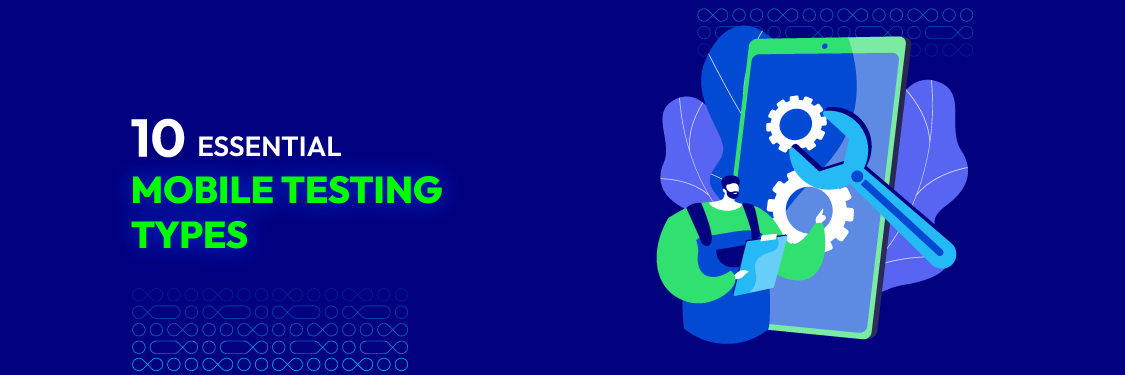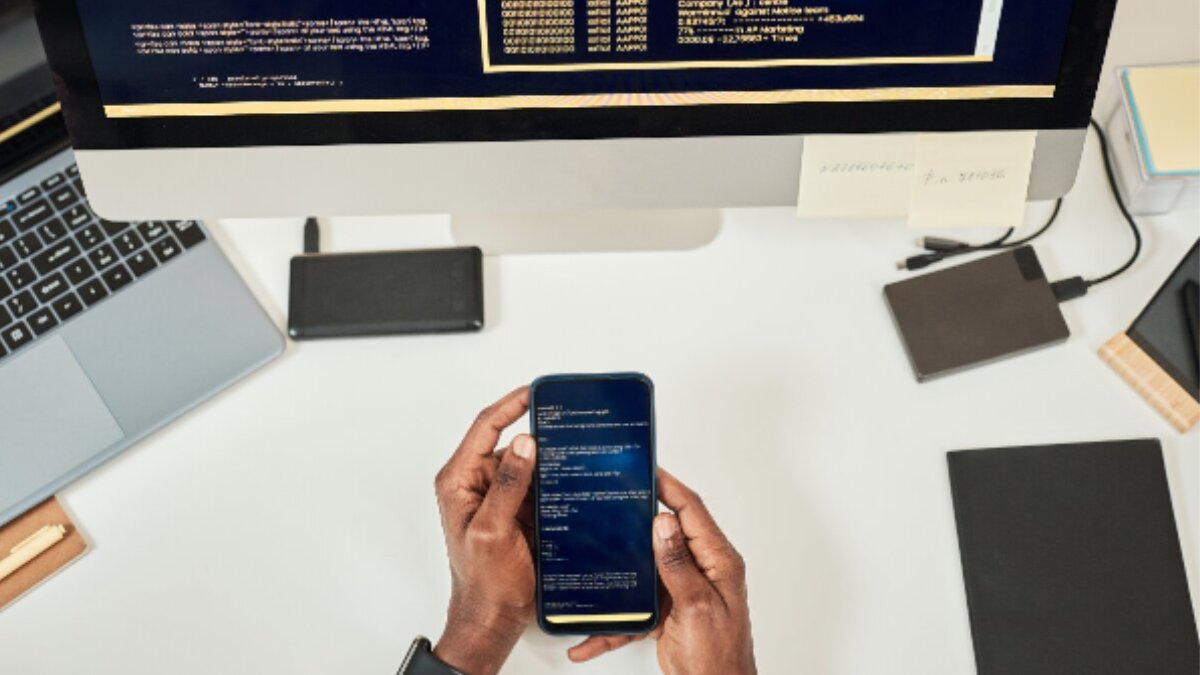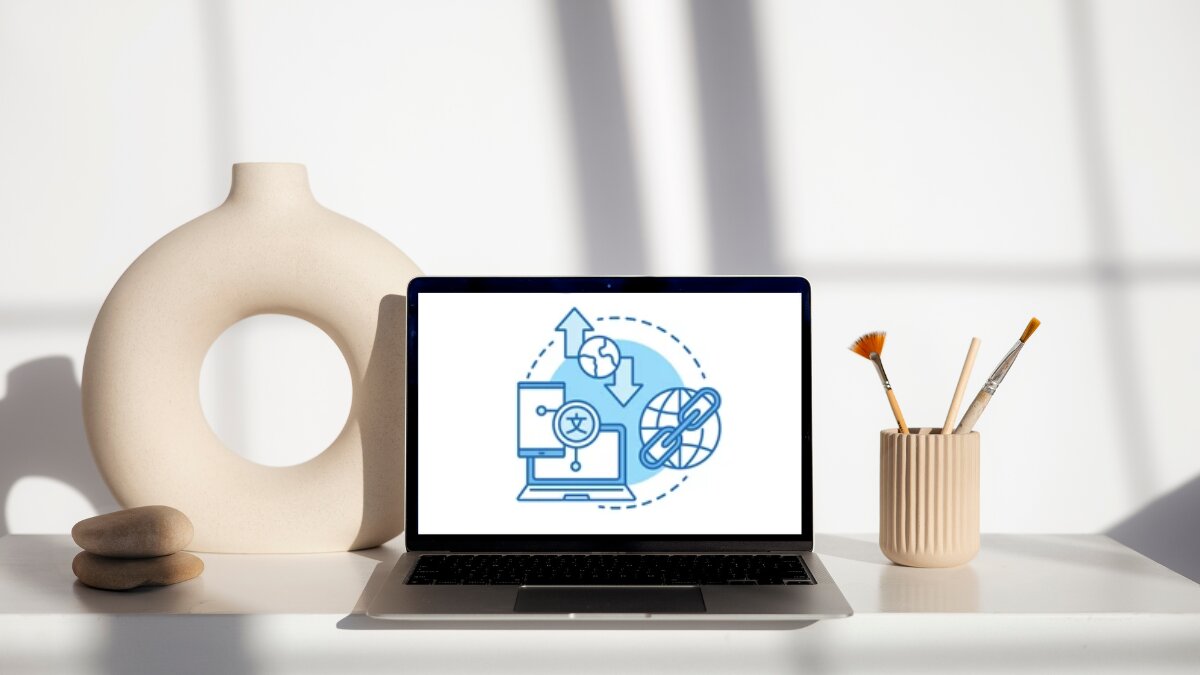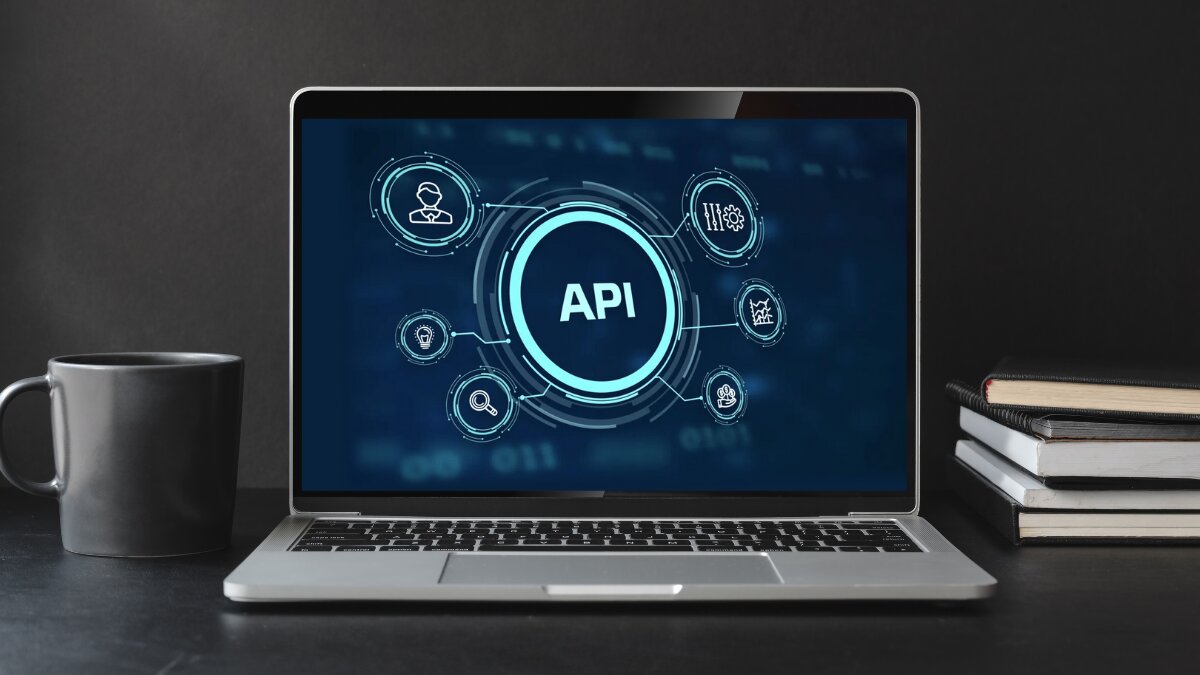10 Essential Mobile Testing Types You Need To Know
Summer Nguyen | 05-08-2024

In today’s fast-paced digital landscape, mobile applications play an indispensable role in our daily lives. With the increasing need for user experiences, the value of quality assurance (QA) services in mobile app development cannot be overstated.
As mobile technology advances, so do the issues of guaranteeing the stability, performance, and usability of mobile applications. Thorough and systematic testing of mobile applications is crucial to good quality assurance. This includes a diverse strategy and methodologies designed to solve certain areas of app functionality, performance, and user experience.
In this article, we will unlock the potential of the most common mobile testing types. Before diving into these types, let’s cover the definition of mobile testing.
Overview of mobile testing
Mobile testing is the process of evaluating the operation, usability, and consistency of a mobile device. It aims to ensure the quality of a product. There are different mobile testing types, each focusing on a specific aspect of the application.

Mobile application testing plays an important role in ensuring the quality of products and the success of a project.
The types of mobile applications include:
- Native Application: Installed directly on the device, developed for a specific platform.
- Web-Based Applications: Accessed via the device’s browser.
- Hybrid Application: Combines elements of both Native app and Web app.
Unveiling the Different Types of Mobile Testing
With 10 essential types of mobile testing, developers can tackle challenges and deliver flawless experiences to users. Let’s explore mobile testing types and their significance in creating top-notch mobile applications.

Functional Testing
First and foremost, Functional testing ensures that all app operations work as planned; user flows are the app’s focus. Interactions, data utilization, and input or output are all tested. Here are some examples of this testing that you should consider:
- Checking that the software installs and opens without error.
- Ensure that users can create new accounts and successfully log in.
- Checking that buttons and typing areas work as intended.
- Making sure that notifications and messages appear accurately on the screen.
Tools and frameworks used for this type of testing include Selenium, Puppeteer, and Appium. Best practices for functional testing:
- Define clear testing objectives: Ensure all testers understand the product requirements and specifications.
- Prioritize testing high-risk and complex cases first: These cases require human insight and if issues are found, they can be addressed promptly.
- Develop reusable test cases: Write instructions that are simple, clear, and executable.
- Utilize automation where possible: Automation saves time and allows for more frequent test runs.
- Document: Documentation is essential for tracking issues and reporting helps other teams understand the identified problems and their resolutions.
Compatibility Testing
Compatibility testing makes sure your mobile app works well on all the different kinds of mobile devices, both iOS and Android. It ensures your app runs smoothly and works properly on lots of different devices, operating systems, hardware, web browsers, and their various versions.
The primary types of compatibility testing include the following:
- Backward compatibility testing.
- Forward compatibility testing.
- Browser compatibility test
- Mobile compatibility testing.
- Hardware compatibility testing.
- Device compatibility testing.
- Network compatibility test
Some tools and frameworks are used for this testing such as Ranorex, BrowserStack, Selenium, Serenity and Cypress.
Ensuring high-quality compatibility tests involves the following key strategies:
- Test throughout development: Conduct to adapt to software changes and maintain compatibility with intended devices.
- Use real devices: Utilize to closely replicate user experiences across various platforms and ensure accurate results.
- Prioritize the tests: Focus on common devices, browsers, and operating systems, as well as critical software features to ensure basic functionality.
- Integrate agile techniques: Implement such as sprint-based testing, to facilitate efficient testing milestones and encourage communication across departments for consistent improvement.
- Limit the testing scope: Quality assurance teams need to recognize when to conclude tests and acknowledge instances of incompatibility. Thereby, developers may opt to adjust minimum requirements rather than altering the software.
Interruption Testing
This type of testing focuses on determining how the application responds. Thereby, it recovers when confronted with unexpected interruptions. The application will handle interruptions based on their severity.
For minor disruptions, the application will pause and then resume operation. However, for more severe disruptions, the application needs to take other measures, such as restarting or displaying error messages.
Examples of test interruptions are:
- Receiving phone calls while an application is running
- Messages or SMS that arrive while an application is running
- Battery life while the application is running
- When an application is running, the device is either plugged in or out of charge.
- When executing an application, the device shuts down.
- When a program is running, the OS upgrades.
- Loss and restoration of network connectivity while a program is executing
Some tools used for interruption testing like Mautomate, Wizard Tool and UIAutoMonkey. These tools help testers to simulate real-world interruptions and assess how well the application handles them.
Localization Testing
It is a modification process ensuring that the program fits in the language and currency standards of the country or region where it is used. Localization testing focuses on verifying an app.
It functions seamlessly in different locales, adhering to cultural norms, language, and legal requirements. This form of mobile testing ensures that the application’s user interface is adequate and modified to be relevant to the country of use.
Localization testing uses local language speakers to identify a variety of issues, including:
- Translations that are not natural
- Accuracy and cultural relevance
- Currency, symbols, and prices
- Overlapping UI components
There are some tools that are used for this testing like Redmine, TestLodge and TestRail. Here’s a concise best practices for localization testing:
- Test early to reduce costs.
- Use skilled local testers to ensure readiness for global release.
- Monitor key performance indicators (KPIs) to track user growth and address linguistic-related issues.
Installation Testing
This type is referred to as implementation testing. It is used to determine whether the software has been properly installed and includes all of its inherent functionality. It is completed at the final step of testing, before the end-user has the first interaction with the product.
Furthermore, installation testing allows the team of testers to check both the quality and correctness of the installation procedure. It ensures that users have an optimal user experience. Implementation testing guarantees that users encounter an optimal user experience. Types of installation testing include:
- Silent installation
- Attended installation
- Unattended installation
- Network installation
- Clean installation
- Automated installation
Some of the frequently used tools for Installation testing are: RSpec, Aruba, Minitest. It’s crucial for installation testing to meet high standards. To ensure this, here are some best practices to make testing thorough, organized, and consistent across software development projects.
- Understanding requirements forms the basis of a robust installation test plan.
- Comprehensive test cases should cover high-priority tasks and various usage scenarios.
- Simulating real-world conditions during testing helps identify potential deployment issues.
- Thorough documentation of test execution is essential for analyzing results and improving future builds.
Usability Testing
Usability testing, or user experience testing, assesses the app’s ease of use and intuitiveness. It focuses on the overall customer experience, pinpointing bugs and suggesting improvements both within and beyond the app.
Engineers, marketers, and product managers aim for a top-notch “app-driven” experience. Therefore, conducting usability tests with real users on real devices is crucial for promptly addressing any usability issues before launching the app. Some examples of usability testing projects are:
- Testing for preferences
- Testing the designs
- Usability testing using moderation
- Usability testing without moderation
- Testing for a competitive experience
Tools used for this test include Maze, Hotja and Trymata. Here are pro tips that you should know:
- Ask your team what kind of research they do most often so you can make sure your tool matches their methods and goals.
- They might say they need more numbers because their current tool only allows for interviews.
Performance Testing
The performance test is a sort of software testing. It is used to ensure software applications operate efficiently within the application’s intended scope of work. Response time, reliability, and resource utilization are all indicators of software application performance.
It focuses on:
- Response time: determines whether the application responds quickly or slowly
- Scalability: refers to the greatest user load that a software application can handle.
- Stability: determines whether the application is stable under different loads.
Plus, performance analysis aims to develop solutions that optimize software performance. It helps us avoid unforeseen situations when deploying applications in real environments.
There are several types of performance testing, including:
- Load testing
- Endurance testing
- Stress testing
- Spike testing
Some popular tools used for performance testing include Apache JMeter, WebLOAD, and LoadRunner. Here are some instances of performance testing:
- Define clear performance goals and relevant Key Performance Indicators (KPIs).
- Test early and frequently throughout the development lifecycle.
- Simulate realistic user behavior, including peak traffic scenarios.
- Choose appropriate testing tools based on project requirements and team expertise.
- Monitor and analyze results to improve product performance iteratively.
Security Testing
Evaluating the security level is a kind of non-functional testing. It focuses on whether the application is designed and configured correctly. The purpose of evaluating web application security is:
- Identify assets: Items that need to be protected, such as software applications and computing infrastructure.
- Identify risks and vulnerabilities: activities that can harm an asset, or flaws in one or more assets that attackers can exploit.
- Assess risk: Analyze the potential negative impact (likelihood and severity) of identified threats and vulnerabilities on the business.
- Perform remediation: It identifies vulnerabilities, guides fixes, and verifies remediation.
Some tools used for security testing like Astra, Drozer and Veracode. There are various sorts of security tests, including:
- Vulnerability scanning
- Penetration Testing
- Security code review
- Ethical hacking
API Testing
Application Programming Interface (API) testing entails directly assessing application programming interfaces (APIs). It is commonly used for transmitting information and executing tasks.
Here are some examples of this testing that you should know:
- A bank checking its API to validate money transfers between accounts.
- A social media platform confirming accurate retrieval of user profile details via its API.
- An e-commerce website ensures smooth order processing, including correct product shipping and billing information, through its API.
Tools supported for API testing include Postman, Runscope and Curl. Here are some best practices for API testing:
- Test early and often in the process.
- Make claims to verify expected consequences.
- Remember that APIs should secure valuable data.
- Assess how big amounts of data are handled.
Stress Testing
Stress testing also known as load testing or endurance testing involves assessing how well a system, device, or component performs and remains stable when subjected to challenging or unusual conditions.
We assess the performance of the application by subjecting it to a load higher than what is typically experienced in real-life scenarios. This allows us to determine the application’s threshold under increased load, ensuring optimal performance even during periods of unexpectedly high demand.
Various forms of stress tests assess how well a system, device, or component functions and stays stable. Some prevalent types of stress tests comprise:
- Load testing
- Volume testing
- Application testing
- Transactional testing
- Systemic testing
- Exploratory testing
Tools used for Stress Testing include: Apache Jmeter, LoadRunner and BlazeMeter. Following best practices is crucial for achieving optimal outcomes in all your testing endeavors. Here are some best practices when conducting this testing:
- Establish clear goals and objectives beforehand to focus testing efforts.
- Utilize real-world scenarios and data for accurate performance assessment.
- Maintain and update test environments regularly for reliable results.
- Monitor the test closely to identify any unexpected behavior or performance issues.
Closing remark
In conclusion, mobile testing plays a pivotal role in ensuring the success of your app. It is not only finding defects, but it also delivers exceptional user experiences. Through exploring the 10 essential mobile testing types, we’ve grasped the significance of quality testing in mobile app development.
By leveraging suitable techniques and tools, we can not only meet but exceed user expectations, resulting in amazing experiences. Embracing new trends and effective testing methods are key to building competitive mobile apps. Hopefully, this article has helped you better understand mobile testing along with different types of it.





![Top 20+ Must-have Shopify Apps for 2025 [Free & Paid] - Mageplaza](https://cdn2.mageplaza.com/media/blog/must-have-shopify-apps/top-must-have-shopify-apps.png)
![[2025 Updates] Top 10+ Upsell Apps for Shopify - Mageplaza](https://cdn2.mageplaza.com/media/blog/best-upsell-shopify-app/cover.png)